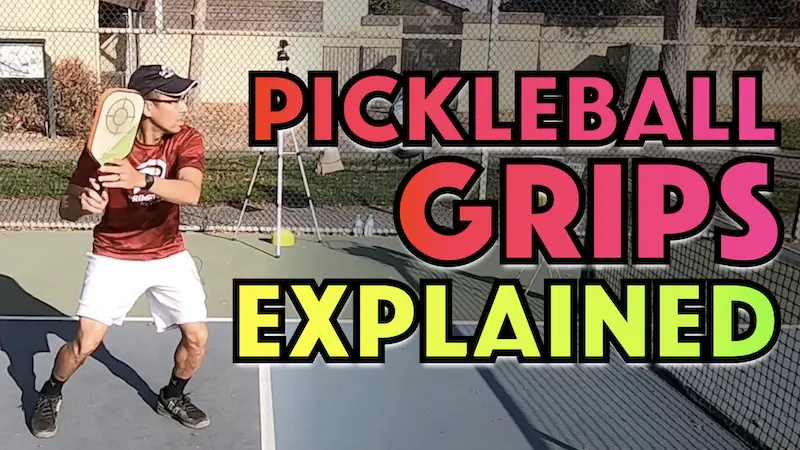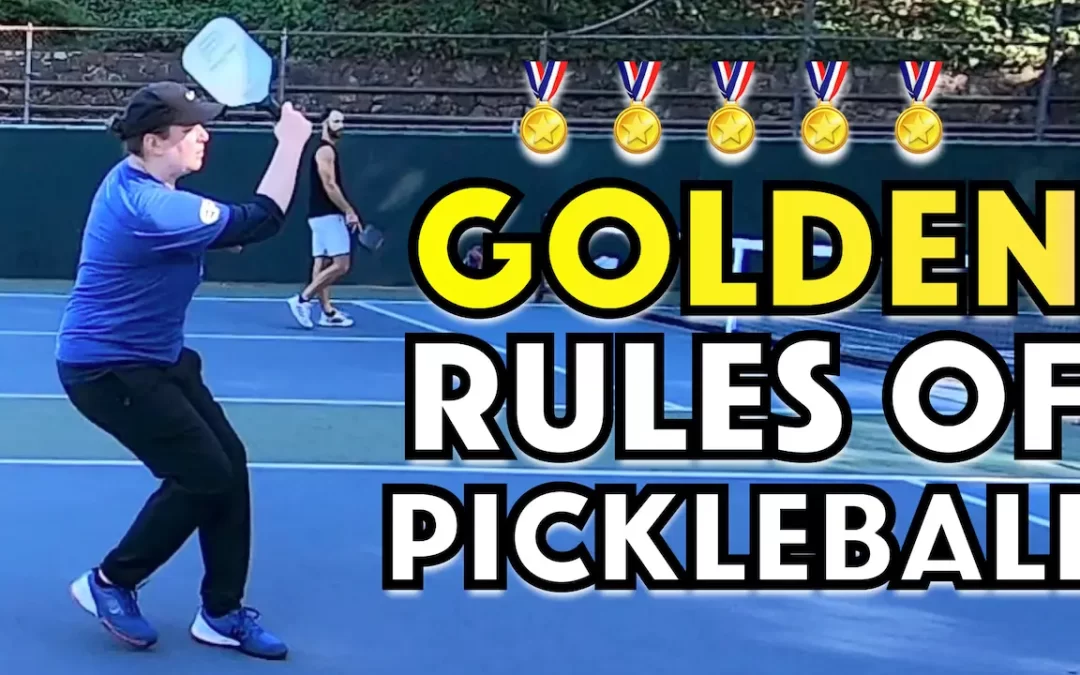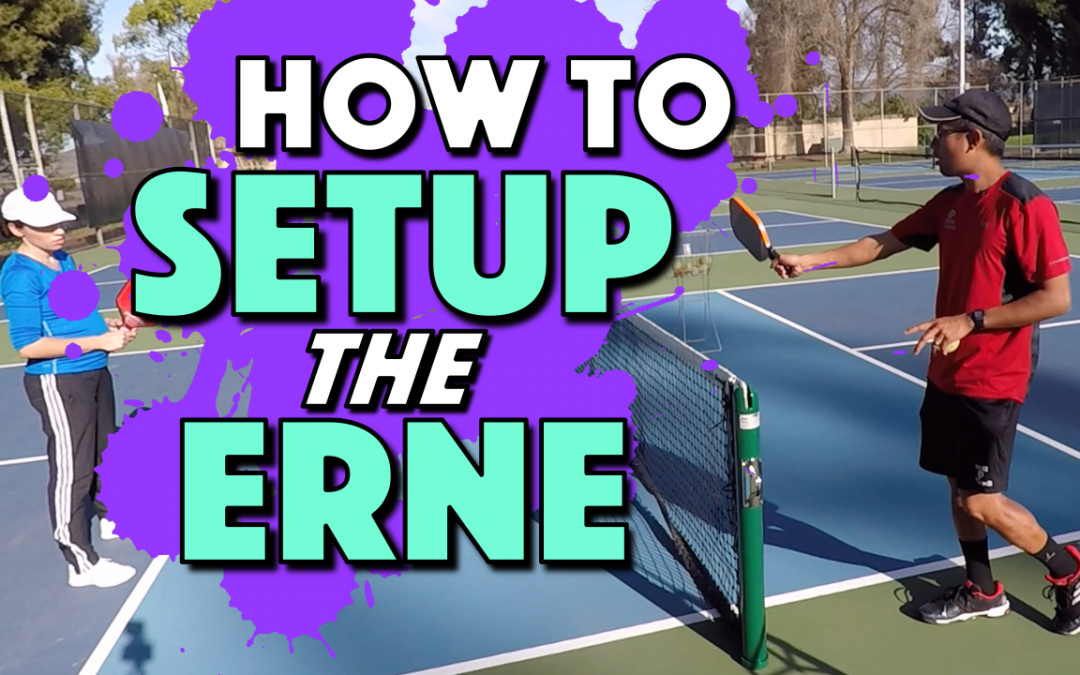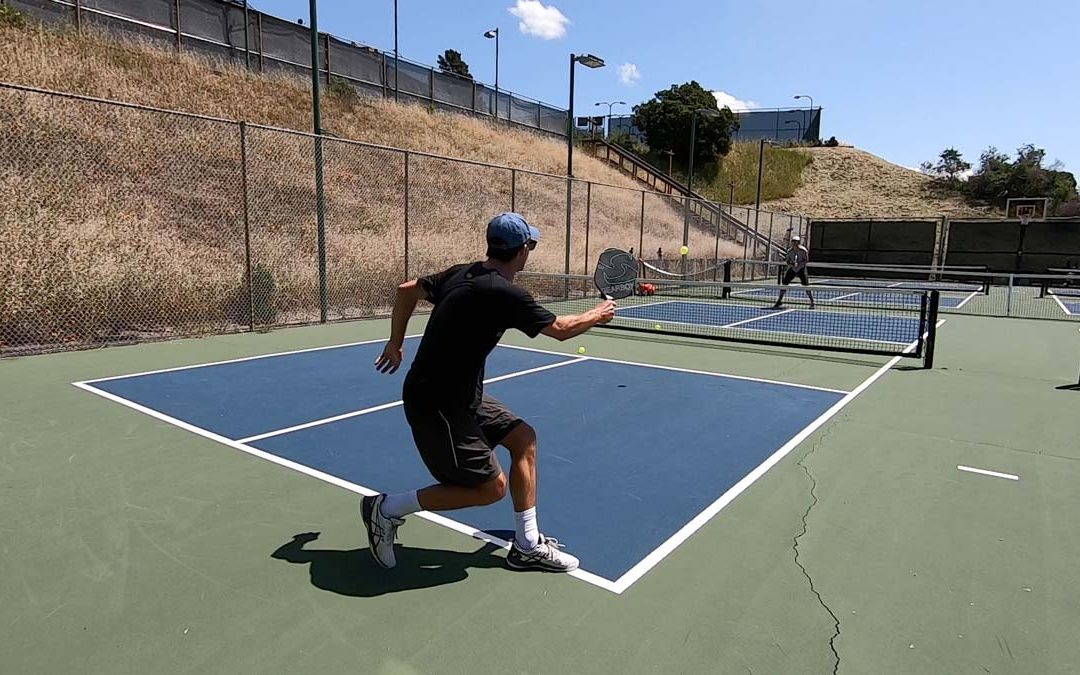Pickleball is the fastest-growing racket sport in North America. But don’t let any pickleball player hear you call it a racket… it’s a paddle. It is generally grouped under the “racket sport” category though, as is ping ping, which also uses a paddle. The game was invented by two families friends in Washington State in 1965 to keep their kids occupied.
The two men created the game using an old badminton-sized court, some table tennis padles, and a whiffle ball.
After some trial and error, they decided the score in pickleball would be played to 11. You will find that to be true most of the time but there are some variations of that and we’ll cover those.
Let’s look a little more closely into how many points is pickleball played to and how it is scored. Ready?
Pickleball Scoring
Traditional Scoring in Pickleball
If playing in a doubles format (2 players per end of the court) or singles (one player per end of the court), the game only allows for a point to be scored when you or your team are serving. The player who serves continues to serve until they or their team loses a rally by committing a fault.
In doubles, once the first player to serve first has been on the losing end of a point, the serve would rotate to the next server on the same serving team.
Once that server or their partner commits a fault, the serve goes over to the other end of the court and the opponents now take their turns to serve.
In pickleball scoring, though the winner is the first to reach 11 points, the player or team has to win by two points, therefore, the final score can be higher.
Acts that lead to a loss of point in pickleball are called faults. These acts are similar to other racket and paddle sports such as tennis, ping pong and badminton. Typical faults in are: the ball going into the net, the ball landing out of bounds, the serve landing in the wrong service box etc…
Although a game is typically scored to 11 points, a team or player also typically needs to win two out of three games to 11 in order to win the overall match.
For a deeper look on how to score in pickleball, click here.
Rally Scoring In Pickleball
Rally scoring is a bit different than the traditional scoring system. The biggest difference is that either side can score when an opponent commits a fault even if they are not serving. Rally scoring is typically played to 15 or even 21 points since points tend to stack more quickly when each point played makes it onto the scoreboard.
Rally scoring is being discussed in pickleball but traditional scoring is still the norm so we will stick with the more traditional method of scoring in this article.
You can learn more about rally scoring here.
Things To Keep In Mind About Scoring (Including Alternate Scoring Systems)
- A game must be won by 2 points, no matter what the winning score is (ie 11-9, 15-13, 22-20)
- Recreational play is usually less formal, so playing to 11 or 15 is common. You can also switch it up and be as flexible as you want as long as you all agree on the format before play begins
- In recreational play, if there are many players looking to mix in and not enough courts, typically one game is played and then there’s a rotation. In private recreational play, where you have reserved a court or the courts are quite open, you may player with the same players for many games in a row.
- Tournament play typically has a standard set of rules about scoring and how many games to be played.
- During tournament play, games can be played to 15 or 21
- Tournament games that are scored to 11 are usually played as the best 2 out of 3
- Rounds robins and other formats may have different rules where it can be played within a certain amount of time or points (whichever comes first)
- Some new formats are sprouting up such as Major League Pickleball (MLP) or MLPLAY. This format has team matches composed of 4 games with a unique “Dreambreaker” singles tiebreaker.
- As the game evolves, new and varied scoring formats are being experimented with but the games to 11 are still the norm.
To really get a better understanding of the scoring system in pickleball, you need to understand some basics of how to play pickleball.
Are you ready to learn more?
Overview of How To Play Pickleball
Pickleball is not as time consuming as many recreational games. The average time a pickleball game lasts is between 15 and 25 minutes. As mentioned above, in a regular traditional scoring game, whoever scores 11 points first, wins the game.
The winner needs to win the game by two points so the score can end up being higher between equally skilled players.
Team play, known as doubles, is the most popular format with 2 players per team though you can also play one vs. one which is know as singles.
Serving & Service Sequence
Players determine which side is going to serve first in some fair method such as flipping a coin. The service begins on the right-hand side of the court with the server standing behind the baseline.
As in tennis, the server can be penalized if a foot is over the baseline. The ball is served underhanded and you only get one attempt to serve the ball in, not two chances like in tennis.
If serving from the right-hand side (even side) of the court, the player must hit the ball so it lands in the opponent’s diagonal court and vice versa when serving from the left-hand side (odd side) of the court. The ball can clip the net on a serve. This is only a fault if it lands outside the service area.
Other key points regarding serving:
- The server must serve underhanded with the paddle positioned below the waist at the time of contact with the ball
- The top of the paddle must be pointing down on the serve. It must also be below the server’s wrist.
- Points are only scored by the side that is serving.
- The server can either toss and hit the serve out of the air or drop the ball and serve it on the up-bounce.
- The server must have both feet behind the baseline. The server’s feet cannot touch the baseline or enter the court until the ball is served.
- When playing doubles pickleball, the designated server on a team keeps serving until he or she makes a service fault. At this point, the serve moves to their partner. If he or she faults, the serve switches to the opponent. This is called a Side Out.
Returning The Serve
Unlike the serve, that must land in a particular service area, the return can land anywhere on the serving team’s side and the same goes for every shot in the point after that.
The player receiving the serve must allow the ball to bounce once before returning it. The side that has served the ball must also allow the ball to bounce once on their side.
From then on, the ball can be volleyed by the players.
Stay Out Of the Kitchen
Beware of the “kitchen”. It is actually the non-volley zone and extends 7 feet from each side of the net and from sideline to sideline marked out by the non-volley zone line.
The ball cannot be served into this area. If it is, it is considered a fault and the serve reverts to the 2nd server in doubles or to the opponent in singles.
A player cannot stand in the kitchen or stand on the non-volley zone line and volley the ball. Included is any momentum that propels you into the kitchen after you volley a ball according to this rule in Pickleball’s rule book. This is considered a fault.
If the ball bounces in the kitchen, then a player can return the ball while standing in the kitchen. These kitchen rules apply to players in doubles and singles play.
The kitchen rule or non-volley rule is one of the unique aspects of the game. A player standing in the kitchen and volleying a ball can expect to be the butt of a some teasing including yells of “kitchen” and “you blew it”.
Final thoughts
Pickleball is rapidly becoming more than just a leisure game. Associations and clubs are emerging all over the country.
Professional tours have emerged in recent years and more top level players are taking a shot at making a full time living from playing the sport through prize money and sponsorship deals.
However, by far and away the vast majority play for recreation. Learning the basics and how to score will help you enjoy the sport of pickleball for years to come.
The game of Pickleball is fun and enjoyable playing doubles or singles with friends. It is easy to learn and simple to play for people of any age and fitness level.






